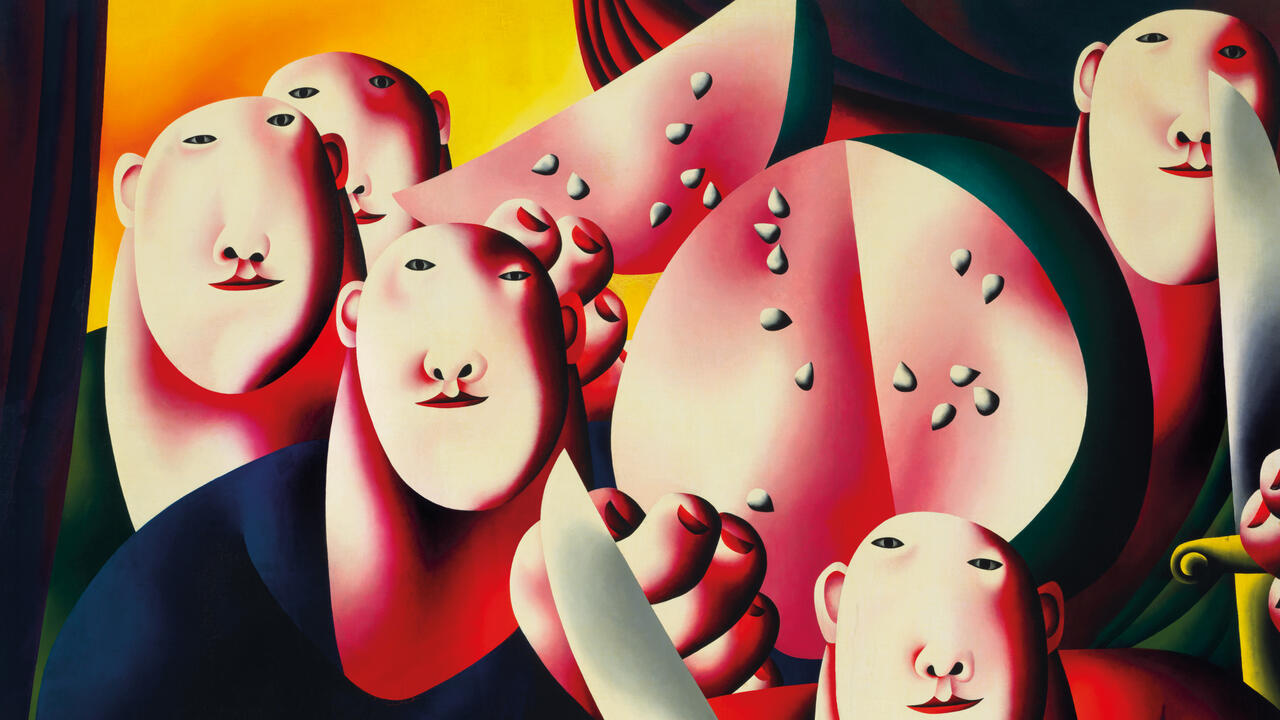1st Garage Triennial
Garage Museum of Contemporary Art, Moscow, Russia
Garage Museum of Contemporary Art, Moscow, Russia

If, as Boris Groys argues in ‘On Art Activism’ (2014), art can discern reality’s ‘absurd, unworkable character’, then what better time than the present for it to assume the role of lookout? And what better contemporary landscape for it to survey than Moscow, a city whose political inner-sanctum has become so intertwined with the recent developments (or lack thereof) of Western democracy?

Enter the inaugural Garage Triennial (or, according to its strapline: ‘Russia as you’ve never seen it’), an initiative that intends to widen the scope of a national art scene that, until now, has been locked in the capital’s gravitational pull. Overseen by a curatorial team of six, the presentation features 68 multi-generational Russian artists hailing from Kaliningrad to Vladivostok (an 11-hour flight separates the two), and an abundance of work that, for the most part, was completed after 2012 – the year that Vladimir Putin strolled into the Kremlin for a third term, amidst a torrent of pro-democracy protests.
In spite of this, the Triennial is surprisingly (suspiciously) light on critical voices, and those that risk dissidence pass up condemnation for tepid documentation. Alexey Iorsh’s Art Activism in Comics (2014), for instance, reimagines Pussy Riot’s infamous 2012 performance as an anarchist-chic comic. Victoria Lomasko follows suit with Chronicles of Resistance (2011–12), a collection of illustrations – reminiscent of those published during the Russian Revolution of 1917 – documenting what Western outlets gleefully termed the Snow Revolution (it began in December). But while these works err closer to rote recounting than explicit reprehension, the liberal agenda that they revive still touches the bones of some: on the reverse of a newspaper that forms part of Lomasko’s project is a disclaimer distancing the Garage from the ‘opinions’ of the artist. (Screened nearby is Chto Delat’s It Didn’t Happen to Me: Safe Haven (2016), a film set on an island-cum-refuge for artists facing censorship.)

A number of works take to task the country’s systemic issues of inequality, sexism and domestic violence. 12-Hour Workday (2016), for instance, is a production line similar to that of a Russian clothes factory. Until the triennial ends, it will be manned by the St. Petersburg-based cooperative Shvemy who, in near-silence, will stitch clothes that will later be sold for 44 rubles (about GBP£0.61) each – the average wage that factory workers in Russia earn per garment. In a similar attempt to give voice to the victimized, a violent video series from the collective Gentle Women foregrounds the female body (lactating onto glass, crawling through snow, pouring salt into the Baltic Sea), while Anastasia Potemkina’s Bruises (2014), a brutal yet assertively tranquil assemblage of photographs, watercolour and film, captures the traces of violence left on the artist’s skin. Seen in a country in which over 40 percent of families struggle to afford food or clothing and in which it is estimated that domestic abuse kills a woman every 40 minutes, these works grow in volume, their refrains echoed by an absent chorus calling for recognition.
While artists such as Anastasia Bogomolova, Aslan Gaisumov and Andrey Syailev explore the region’s extensive history of conflict, it is selections that hone in on the idiosyncrasies of the present, and the artists’ at-hand contexts, which break from the pack. Sasha Pirogova’s Queue (2014), for instance, a film that sets a motley ensemble in a round of choreographed limby gestures, taps into the ways in which incompatible bodies tessellate and shift ‘as one’. The modular micro-academies of ZIP Group’s immersive installation 1.5 x 1.5 School (2016), meanwhile, emphasize the generative nature of art education – offering classes ranging from ‘The School of Collective Actions and Debates’ to ‘The School of Futurisms and Martial Arts’. In Victor Alimpiev’s hypnotic two-channel video Magic Rustle (2011), a woman stares into the camera, her assertive movements balanced between ballet and sign, her speech between poetry and prose: ‘Here and here,’ she says, ‘I declare control.’

At the northwestern tip of Gorky Park, a 2017 work by Kirill Lebedev (Kto) is painted across the wall of an administrative building. In Russian it reads: ‘Thank you for your attention and your attempts at comprehension.’ (This is also the work’s title.) Anything that claims to ‘capture the zeitgeist of the last five years’ yet caveats significantly politicized works should be questioned. However, in clearing the room of dissent and looking further afield, the Garage has provided a platform for a separate faction of previously unheard artists: artists less concerned with Groys’s ‘unworkable’ than with simply making things work.
Main image: Chto Delat, It didn’t happen to me: Safe Haven, 2016, video still. Courtesy: the artists





















